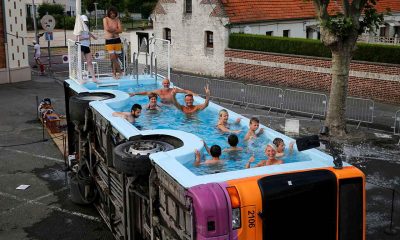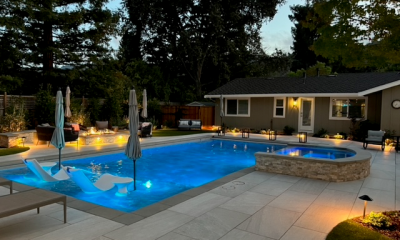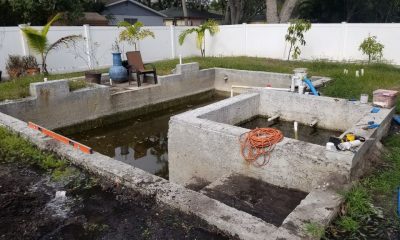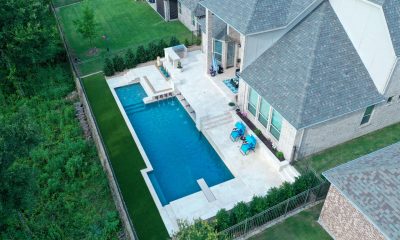Op Editorials
How To Keep Your Pool Renovation From Turning Into a Disaster
A pool renovation can be an exciting project but can quickly turn into a disaster without the right planning and preparation.
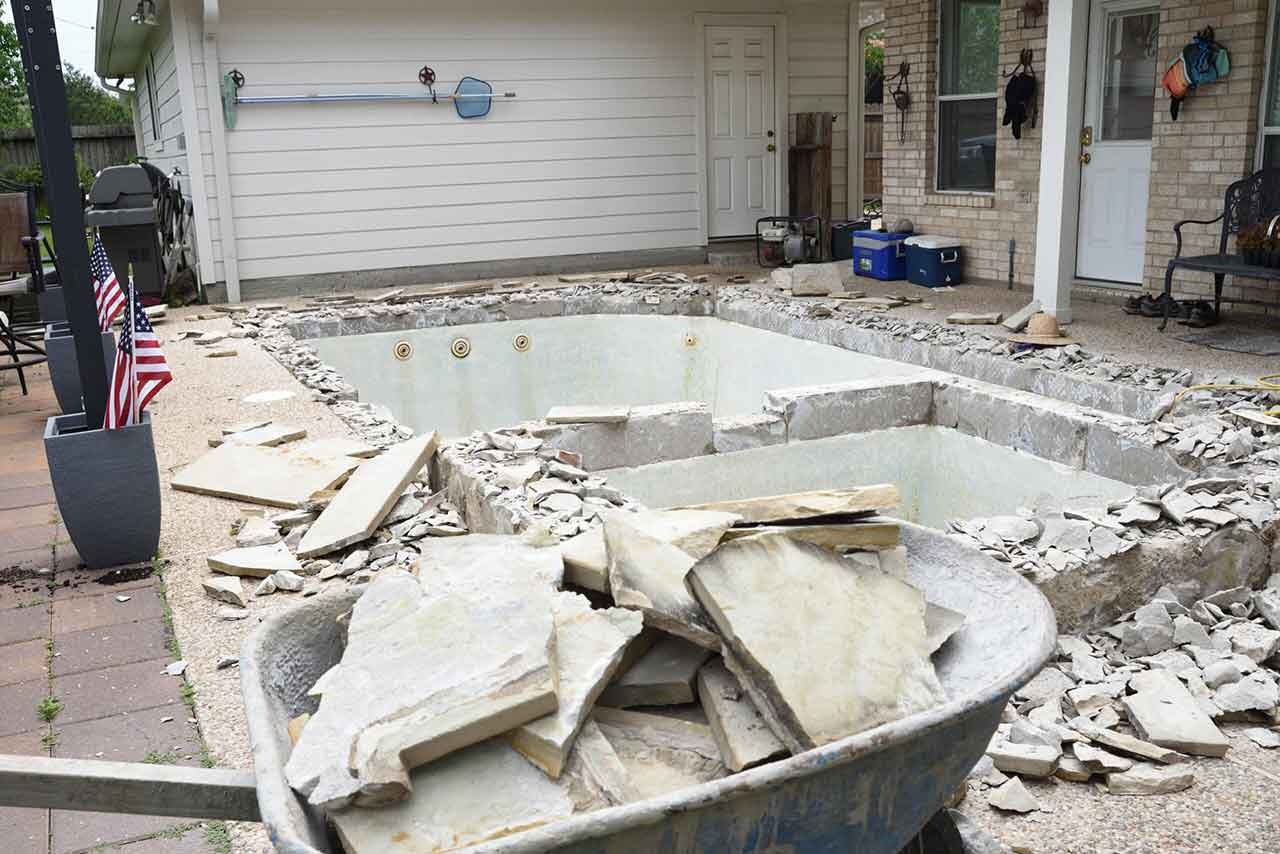
Renovating a pool can be an exciting project. A well-executed pool renovation can breathe new life into your backyard, create a more enjoyable swimming experience, and add value to your property. However, if not planned and executed properly, a pool remodel can quickly become a complete disaster. From skyrocketing costs to shoddy workmanship, there are a number of things that can go wrong.
Thoroughly planning your pool renovation project before you begin is crucial to its success. Without proper planning, the project can quickly become overwhelming and lead to unexpected issues, delays, and budget overruns. A well-planned renovation project, on the other hand, ensures that all aspects of the project are considered, allowing you to make informed decisions and avoid costly mistakes. In this article, we’ll discuss some tips on how to prevent your pool renovation from becoming a complete disaster.
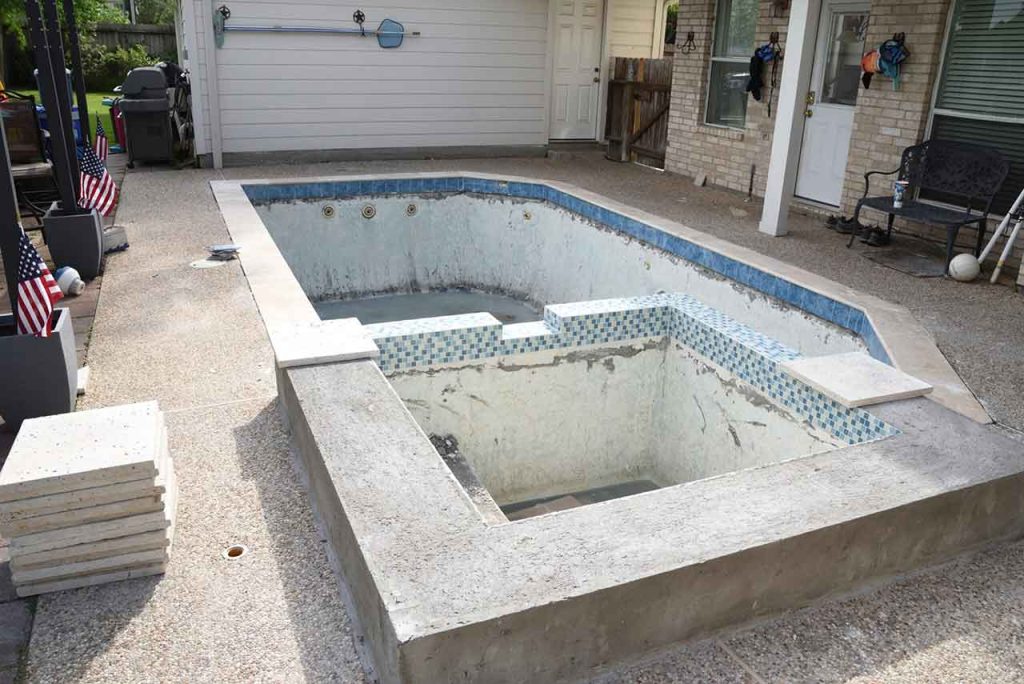
10 Pool Renovation Tips To Know Before You Start a Remodeling Project
- Plan, Plan, Plan
The first step to a successful pool renovation is to plan everything out in advance. Start by making a list of everything you want to accomplish with your renovation. Do you want to add new features like waterfalls or hot tubs? Do you want to replace old pool equipment or resurface the pool? Write down all of your goals and prioritize them.
Once you have a list of goals, it’s time to start planning the details. This includes creating a budget, hiring a pool contractor, and determining a timeline. Be sure to get multiple quotes from different contractors, and make sure that they are all licensed and insured. Don’t rush the planning process – taking the time to do it right will save you headaches and money in the long run.
- Consider the Overall Design
When renovating your pool, it’s important to consider the overall design of your backyard. Your pool should complement the existing landscaping and outdoor living space. This will help create a cohesive look and add value to your home.
If you’re not sure what design will work best for your backyard, consider consulting with a landscape architect or pool designer. They can help you create a custom design that meets your needs and complements your home’s style.
- Address Any Underlying Issues
Before starting any renovation work, it’s important to address any underlying issues with your pool. This includes fixing any leaks, repairing cracks in the pool’s structure, and addressing any plumbing or electrical issues.
If you don’t address these issues before starting your renovation, they can quickly turn into bigger problems, leading to additional costs and delays in your renovation timeline.
- Set a Realistic Budget
Before starting any pool renovation project, it’s important to set a realistic budget. That’s one of the most important do’s and don’ts of pool remodeling. This will help you avoid overspending and ensure you’re able to complete the project without running out of money. When setting your budget, be sure to factor in the cost of materials, labor, and any unexpected expenses that may arise.
It’s also important to prioritize your renovation needs. If your budget is limited, focus on fixing any safety issues or structural damage first. Cosmetic upgrades can be done later when you have more funds available.
- Get the Necessary Permits
Before starting any pool renovation work, you need to make sure you have all the necessary permits. Building codes vary by state and county, so it’s important to check with your local government to find out what permits you need.
If you fail to obtain the necessary permits, you may be subject to fines and could be forced to stop work on your renovation until you have obtained them. Additionally, not having the proper permits can affect your homeowner’s insurance coverage, leaving you liable in case of accidents or damages.
- Don’t Cut Corners
One of the biggest mistakes that homeowners make during a pool renovation is trying to cut corners to save money. While it’s important to stay within your budget, trying to save money by using inferior materials or hiring unlicensed contractors can be a recipe for disaster. In the end, you may end up spending more money to fix the mistakes made by these shortcuts.
If you want your pool renovation to be a success, be willing to invest in quality materials and hire experienced professionals. This may mean spending more money up front, but it will save you money and headaches down the line.
- Research Materials and Equipment
When planning your pool renovation, it’s important to research the materials and equipment that you plan to use. Don’t just rely on the recommendations of your contractor – do your own research and make informed decisions. This includes researching the pros and cons of different types of pool finishes, pool heaters, pumps, and filters.
Following the latest trends is smart, but don’t be swayed by gimmicks. Stick to tried and true materials and equipment that are known to work well. This will help ensure that your pool renovation is a success and that you don’t end up with equipment that needs constant repairs or replacement.
- Communicate Clearly With Your Contractor
Communication is key when it comes to a successful pool renovation. Make sure that you communicate clearly with your contractor from the start. Discuss your goals and expectations, and make sure that they understand what you want to accomplish with your renovation.
Throughout the renovation process, continue to communicate with your contractor. Ask questions and provide feedback, and make sure that they are keeping you informed of progress and any issues that arise. If you notice something that doesn’t look right, speak up and address it immediately.
- Prepare for the Unexpected
No matter how well you plan, there will always be unexpected issues that arise during a pool renovation. This could be anything from weather or equipment delays to unforeseen plumbing issues. Be prepared for these unexpected issues by building in extra time and money into your budget.
Additionally, be willing to be flexible with your renovation plans. If something unexpected comes up that requires a change in plans, be willing to adjust your plans accordingly. This will help ensure that your pool renovation stays on track and doesn’t become a complete disaster.
- Don’t Rush the Process
The key to a successful pool renovation is taking your time and doing things right. Rushing the renovation process can lead to mistakes, oversights, and even accidents that can compromise the quality of the work and result in additional costs and delays.
Before starting your renovation, take the time to plan out all the details, including the scope of the work, your budget, and your timeline. Rushing into a renovation without a clear plan can lead to unexpected issues that can quickly spiral out of control.
Common Pool Renovation Projects & How Much They Cost
Marcus Weekes from Premier Pools & Gardens in Brisbane explains that pool renovation projects are a common undertaking for homeowners. He mentions several common projects that homeowners usually choose, including installing new tile and coping, waterline tile, custom interiors, pool lighting, filtration improvement, and equipment relocation.
Renovating Tile & Coping
Renovating tile and coping involves replacing old, worn-out tiles and coping with new ones to give the pool a fresh look. Another popular option is replacing the waterline tile that runs around the perimeter inside of the pool. Homeowners typically will choose between glass and ceramic mosaic tiles to enhance the pool’s appearance.
Custom Interiors
Many pool owners will opt for custom surface interiors. In Australia where Weekes is located, they use Pebblecrete. Here in the U.S. you’re more likely to use Pebbletec. Whichever you opt for, that type of glass beading is used to give the pool a unique and sparkling look.
Adding or Upgrading Lighting
Weekes suggests that adding pool lighting or upgrading to LED lighting can also provide a more vibrant and welcoming atmosphere, especially during nighttime swimming.
Upgrading or Relocating Equipment
He also notes that a pool renovation is an opportune time to improve your pool’s filtration. This can involve replacing old filters or adding new pool equipment to improve the pool’s water quality. Equipment relocation may be necessary if the pool equipment is causing noise or visual distractions.
Pool Renovation Costs
Overall, homeowners can choose from a variety of different renovation projects to upgrade their pool’s appearance and functionality. From small changes like adding lighting to larger projects like custom interiors, these renovations can make a significant difference in the overall enjoyment of the pool. How much your pool remodeling project will cost ultimately boils down to the materials and contractor you choose.

Renovating a Swimming Pool
Renovating your pool is a significant investment in your home and your family’s enjoyment, and it’s essential to take the process seriously. Rushing into a renovation without careful planning and execution can lead to a variety of issues, including unexpected costs, delays, and even safety hazards. On the other hand, a well-executed renovation can transform your backyard into a beautiful and functional space that adds value to your home.
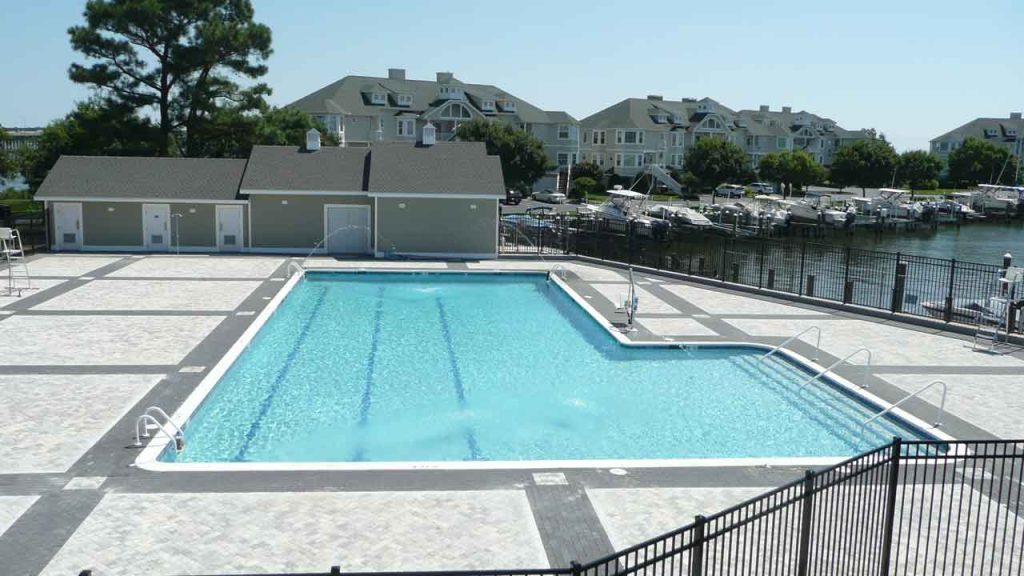
Work With an Expert
Perhaps the most critical takeaway in this entire article to preventing your pool renovation from becoming a disaster is to work with a reputable and experienced contractor. Finding the right contractor can be a daunting task, but it’s crucial to take the time to research and interview potential candidates. Look for contractors who have a track record of success in pool renovation and who are licensed, insured, and bonded. Additionally, it’s essential to check references, read online reviews, and ask for a detailed proposal that outlines the scope of work, materials, and costs. By working with a trustworthy contractor, you can ensure that your pool renovation is completed on time, within budget, and to your satisfaction.
Good Communication is Key
The final important takeaway to achieving a successful pool renovation is to plan thoroughly and communicate clearly. This includes identifying your goals and priorities, setting a realistic budget, and creating a detailed timeline for the project. It’s also important to be flexible and open to changes as the project progresses, as unexpected issues can arise that require adjustments to the plan. By working closely with your contractor and communicating regularly, you can stay informed about the progress of the renovation and address any concerns or issues promptly. In the end, a well-planned and executed pool renovation can enhance your home’s value and your family’s enjoyment of your outdoor space for years to come.
Talking Pools
Insights From Skimmer’s 2024 State of Pool Service Report
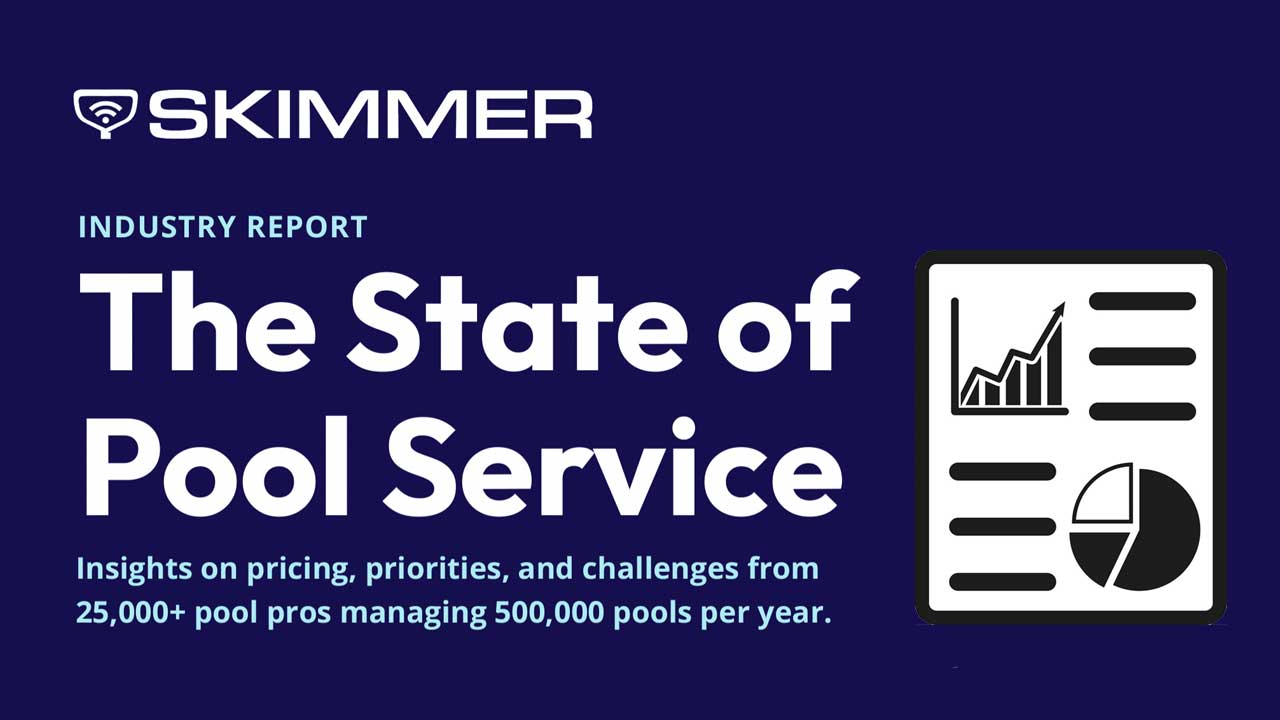
Skimmer, a leading-edge pool service software provider, recently unveiled its “2024 State of Pool Service Report,” a comprehensive analysis based on the invaluable feedback from over 1,700 pool service professionals who responded. This report delves deep into key facets of the industry, such as market challenges, business structures, pricing strategies, technology adoption, and growth plans. Notably, the report culminates from survey responses from Skimmer’s platform of over 25,000 users as well as insights gleaned from broader market research.
Rising Tides of Costs and Strategic Business Responses
One of the more eye-opening aspects to the report, 73% of surveyed pool service professionals reported a commendable upswing in revenue in 2023 compared to the previous year. However, the buoyancy in revenue was tempered by a prevailing concern – rising costs. The majority identified escalating costs as the most formidable challenge faced in 2023, with an anticipatory nod to this trend persisting into the unfolding year of 2024.
A significant number of companies are gearing up to address these rising costs by contemplating price adjustments, with nearly 74% of pool professionals signaling their intention to implement price increases in the current year to sustain revenue streams.
In an exclusive interview with Talking Pools Podcast, Jack Nelson, CEO of Skimmer, underscored this critical issue, stating, “Everyone in the industry feels like costs are going to keep rising. It’s unfortunately an inevitability with sort of inflation. The question is, what are we going to do about it? It’s really interesting to see that most respondents said they were planning on raising prices in order to maintain profit margins.”
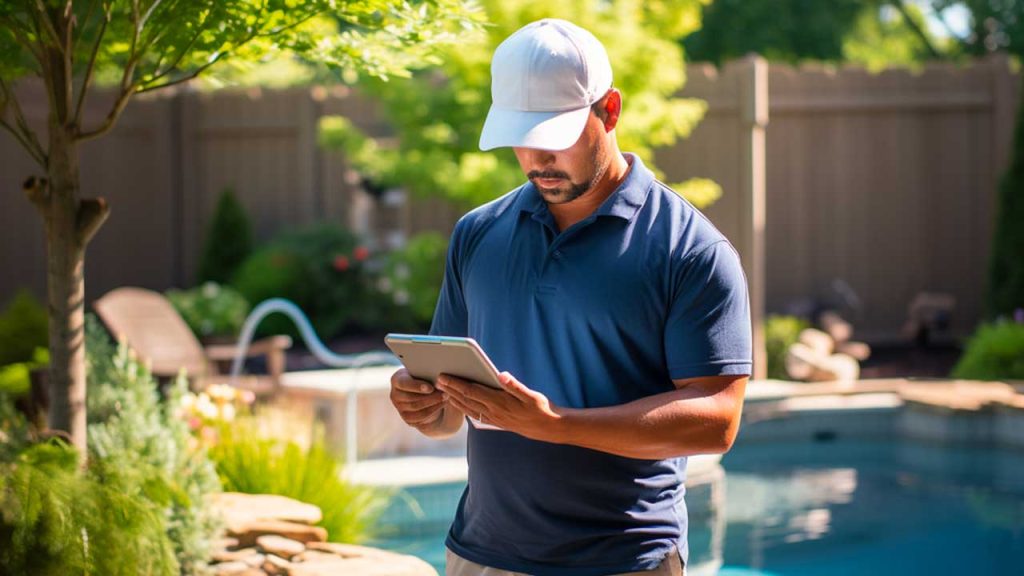
Workforce Dynamics and Marketing Strategies
Beyond the realms of financial strategies, the report casts its gaze on the dynamic workforce within the pool service industry. A noteworthy revelation is that 52% of respondents expressed an intent to expand their teams in 2024. This metric supports a positive indicator that most respondents believe the industry will continue to grow rather than contract.
One statistic you may find surprising, the report indicated that the majority of service technicians still rely heavily on the age-old method of word-of-mouth referrals, with only a modest 35% reporting that they’re investing in marketing. Nelson, who has experienced this sentiment first hand expressed that this way of thinking might be outdated.
“So many folks in the industry think they don’t need to pay for marketing because they get a lot of referrals,” said Nelson, “that’s true. You can grow your business that way, but you can grow it so much more quickly if you are spending a little bit of marketing. Because most of the industry is still not doing it, there’s a real chance to kind of take advantage of that. It’s a huge opportunity for ambitious pool service companies.”
Technology Integration: The Digital Oasis
In counterpoint to that, one area where the pool industry is embracing technology is business operations. One pivotal aspect of the report indicated an escalating integration of technology within the pool service industry. Approximately 75% of respondents revealed that they are leveraging software to streamline various aspects of their business operations. This underscores a growing acknowledgment of the pivotal role technology plays in enhancing efficiency, streamlining operations, and staying ahead in a competitive landscape.
“I think knowing your numbers is absolutely critical,” said Nelson, “so is embracing technology to operate your business more efficiently. That’s true whether it’s Skimmer or any other type of technology. I think there’s a tendency to underestimate the cost associated with doing business. Time is money. If you’re accepting a check from a customer because that customer refuses to get on ACH or credit card, there’s time associated with that cost. I think really understanding where you can automate different aspects of your business to save time and money is critical as costs continue to rise.”
Strategic Navigations for Future Growth
One noteworthy observation gleaned from the report is the success of companies that choose to bill separately for chemicals. Businesses charging customers separately for chemicals were on average more profitable than those who opted to include chemicals in the total price of service.
Including the price of chemicals has traditionally been a more straightforward, fixed-rate structure that is perhaps more easily grasped by pool owners and simplifies billing for pool professionals. However, the drawback lies in the susceptibility to frequent price adjustments due to significant fluctuations in chemical costs.
According to Skimmer’s data analysis, the model that charges extra for chemicals, known as the “plus chems” model, emerges as the most effective strategy in mitigating the impact of both fluctuating chemical costs and variations in weather patterns that might affect chemical usage, providing a robust buffer against such uncertainties.
Beyond immediate challenges, the report reveals a spectrum of strategic approaches pool service professionals are exploring for future growth. Notably, 33% of respondents expressed a nuanced interest in reducing their customer count while concurrently focusing on upselling more services and augmenting the overall value provided per pool serviced. Additionally, 43% are pinning their hopes on introducing operational efficiencies to curtail costs and bolster profitability.
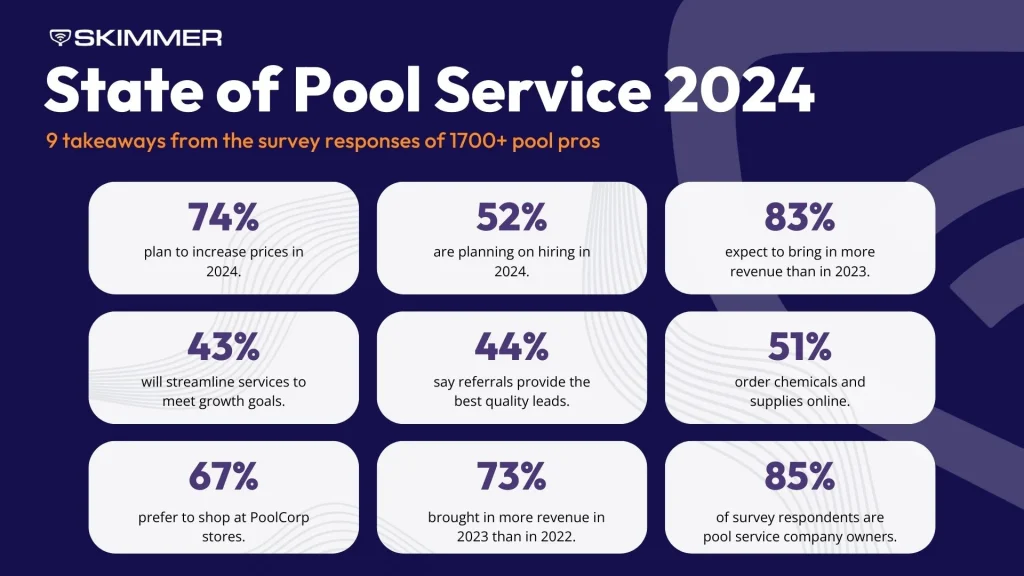
Want to take a deeper dive? Read Skimmer’s 2024 State of Pool Service Report or listen to the interview on the Talking Pools Podcast.
Op Editorials
Ground Penetrating Radar is Like X-Ray Vision For Pool Contractors

Ground Penetrating Radar (GPR) – allows contractors to actually “see” inside pool structures. GPR systems are perfect for locating reinforcing steel and determining the thickness of the concrete. Another helpful aspect of GPR is its use in locating elements inside of framed buildings, pipes, and conduits. Though these systems typically are priced at over $12,000, once prorated across many jobs, the cost is minuscule, while the benefits can be monumental.
What is Ground Penetrating Radar?
Ground Penetrating Radar is a geophysical method that uses radar pulses to image the subsurface of the ground. It is a non-destructive and non-intrusive technique commonly employed in various fields, including archaeology, geology, environmental studies, civil engineering, and utility detection. The primary purpose of GPR is to identify and map subsurface features, anomalies, or objects without the need for excavation.
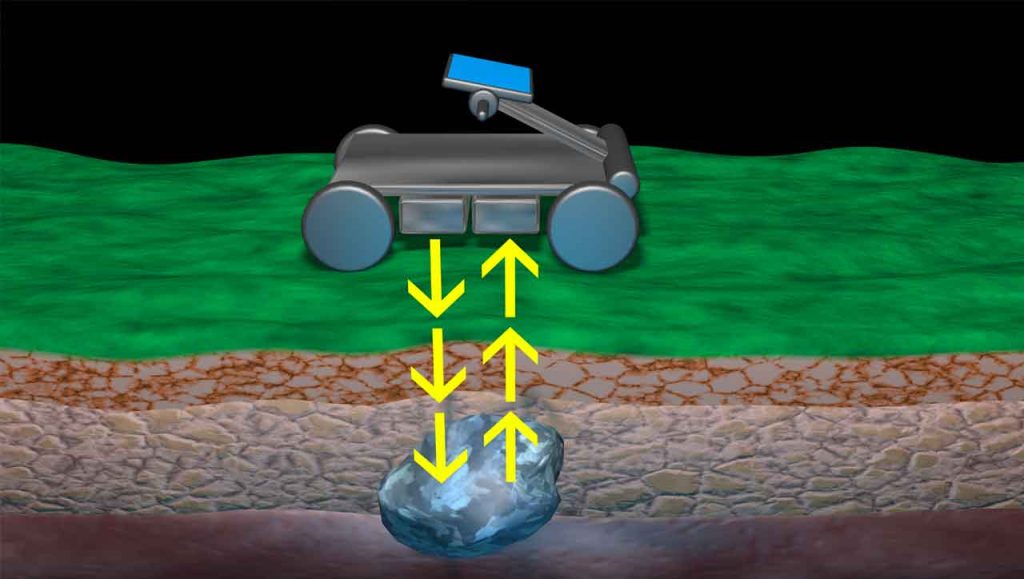
How Does It Work?
GPR works by emitting short pulses of electromagnetic waves into the ground. These radar pulses penetrate the subsurface and interact with different materials and structures. As the waves encounter boundaries between materials, some of the energy is reflected back to the surface. The GPR antenna receives these reflections, and the system processes the signals to create a detailed image of the subsurface. GPR is widely used for utility detection, subsurface mapping, and construction applications, providing valuable information without the need for excavation.
GPR For Pool Builders & Contractors
Today, construction technology is evolving. Ground Penetrating Radar (GPR) has become a valuable tool for pool builders and contractors in various aspects of their work. Here are some ways in which GPR can be beneficial for professionals in the pool construction industry:
- Locating Utilities
- Identifying Subsurface Anomalies
- Mapping Soil Stratigraphy
- Detecting Void Spaces
- Quality Control and Inspection
- Ensuring Compliance with Regulations
- Time and Cost Savings
Using GPR for Non-Destructive Testing
Today, there are a number of intelligent reasons to be using a ground penetrating radar to scan your pool shells. GPR is a non-destructive method to determine what is actually occurring inside of the concrete, without having to drill cores or demolish concrete. Radar allows experts to see the rebar schedule and depth within concrete. Pool construction professionals have even used them to validate the presence of bonding clamps and wire, when inspections were missed (for other contractors).
Use of Ground Penetrating Radar in Remodeling Swimming Pools
For contractors, being able to precisely locate the placement of the reinforcing steel is invaluable. When planning for coring a shell for pool lighting, add plumbing or coring for samples, it is critical to know where the steel is located. Hitting a rebar while coring can easily damage a $500 core bit. Worse yet, a handheld drill binds and kicks back, breaking the user’s thumb.
After stripping the plaster, scanning the shell can definitively determine if there’s sufficient shotcrete coverage over the steel. If it’s insufficient, then the pool can be “flashed” with additional shotcrete (at an additional charge). This will require new coping and tile as well, as the interior dimensions will change. In my own personal firm’s pool remodeling contracts, we have a disclaimer about shotcrete thickness. We will scan the shell for free, but if there is an inadequate amount of coverage, there will be a change order to add shotcrete and adjust the coping, tile and fittings. Think of this as a potential profit center. You can actually show the owners the location and depth of the rebar.

GPR companies charge $500-600 for a 1-hour visit. You can see how quickly owning a GPR unit can pay for itself. After a while, it will actually start earning you money! A Proceq GP8800 can be had for around $12,000 plus the cost of an iPad.
Photo Credits: Proceq
Op Editorials
Mark Zuckerberg Plans To Build a Survival Bunker With a Pool
Facebook founder Mark Zuckerberg plans to build the ultimate survival bunker complete with its own swimming pool.

Mark Zuckerberg, the founder of Facebook and the brains behind the metaverse, is planning on building a lavish new compound complete with an underground survival bunker. According to an exclusive investigation by Wired, the billionaire doomsday prepper is shelling out some serious coin to build the estate, with costs rumored to exceed a whopping $100 million.
Details Emerge About Plans For a Luxury Estate Complete With a Doomsday Bunker
Based on information from both public records and a confidential insider, Wired has disclosed that Mark Zuckerberg’s estate is on the verge of completion. The primary living quarters comprise over a dozen buildings, featuring a remarkable 30 bedrooms and 30 bathrooms. Central to the compound are two colossal mansions, rivaling the size of a professional football field, equipped with offices, elevators, conference rooms, and an expansive industrial-grade kitchen. Evoking a sci-fi ambiance, numerous doors within the compound will be soundproofed, operated through keypads, or designed as “blind doors” seamlessly blending with the surrounding walls.
A tunnel is rumored to connect the two mansions, providing a discreet pathway to the bunker. An additional structure on the estate is set to include a full-size gym, pools, a sauna, a hot tub, a cold plunge pool, and a tennis court. Adding an adventurous touch, 11 treehouses, connected by rope bridges, allow guests to navigate between structures without setting foot on the ground. Notably, Zuckerberg has reportedly hosted at least two corporate events on the property, showcasing the multifaceted nature of this extraordinary compound.
This End of Days Bunker Comes With a Swimming Pool
The compound named Koolau Ranch, sits on Zuckerberg’s purchased land, a tropical haven he bought for a cool $170 million. With plans for the new development leaked, a 5,000-square-foot underground shelter with all the bells and whistles is apparently envisioned to make surviving the end of days a five-star experience.
The investigation by Wired referenced information from sources and planning documents acquired through requests for public records. The documents detailed that the primary residences will be accompanied by a 5,000-square-foot underground shelter, complete with living spaces and an emergency escape hatch.
As plans continue to take shape, one of the most intriguing aspects of the project has surfaced – an 18-foot water tank and pump system. Speculations are rife about its purpose, with rumors circulating that this colossal water reservoir is more than just a contingency plan for the apocalypse. Could it be a key component in Zuckerberg’s ambitious underground pool project?
Billionaire tech moguls are apparently sparing no expense when it comes to preparing for a doomsday scenario. A tell-all book called Survival of The Richest by Douglas Rushkoff reveals that these bunkers are equipped with cutting-edge technology, state-of-the-art security systems, and amenities that make five-star hotels blush.

In the unlikely event of an apocalypse, one can’t help but imagine Mark Zuckerberg’s friend requests suddenly resembling Jim Carrey’s inbox in Bruce Almighty. Forget about FarmVille requests; now it’s all about securing a spot in Zuck’s luxury bunker-ville! Picture this: while the world outside is in chaos, inside the bunker, Zuckerberg’s getting notifications like, “Hey Mark, long time no apocalypse, can I crash at yours?”
As the doomsday clock ticks away, Zuckerberg’s friend count might skyrocket faster than a viral cat video. Everyone from old high school buddies to that guy who accidentally poked him in 2009 will be sliding into his DMs, desperately seeking refuge in the ultimate VIP shelter. The allure of a bunker designed by the creator of the social network could turn Zuckerberg into the most sought-after doomsday BFF.

Interested in learning more? Good luck. Zuckerberg’s compound is now encircled by a 6-foot wall, and, as reported by Wired, an additional layer of confidentiality has been added to the project. Every contracted worker, regardless of their position or role, is said to have been required to sign non-disclosure agreements (NDAs) pertaining to their contributions to the property. This heightened level of secrecy suggests that specific details about the construction and features of the compound are likely to be tightly guarded and may not easily find their way into the public domain.
Featured Photo Credit: MidJourney AI
-
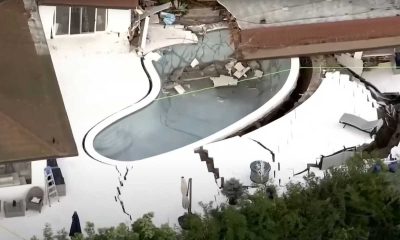
 Pool News4 weeks ago
Pool News4 weeks agoLandslide Damages Homes, Destroys Swimming Pool in California
-

 Manufacturer2 weeks ago
Manufacturer2 weeks agoSRS Distribution Announces Next Phase of Growth by Combining with The Home Depot to Better Serve Professional Customers
-

 Pool News4 weeks ago
Pool News4 weeks agoFluidra Launches €20 Million Venture Capital Fund – Fluidra Ventures
-
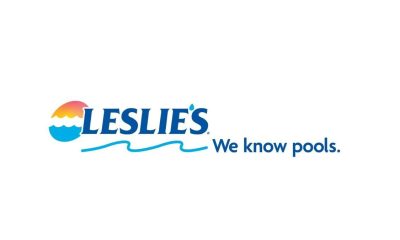
 Cleaning and Service Equipment and Supplies2 weeks ago
Cleaning and Service Equipment and Supplies2 weeks agoRecent Leslie’s/Harris Poll Study Shows Nearly Three-Quarters of Americans Mistakenly Assume Clear Pool Water Is Clean, Swim-Safe Water
-

 Manufacturer4 weeks ago
Manufacturer4 weeks agoBofA Downgrades Latham Group Citing Weak Pool Construction Market
-
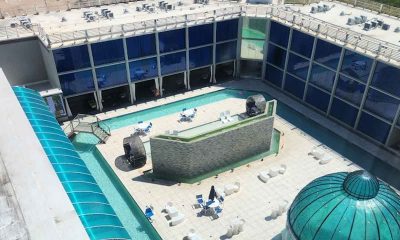
 Pool News2 weeks ago
Pool News2 weeks agoHotel Pool Had Numerous Violations in Case Where 8-Year-Old Was Pulled Into Pipe
-
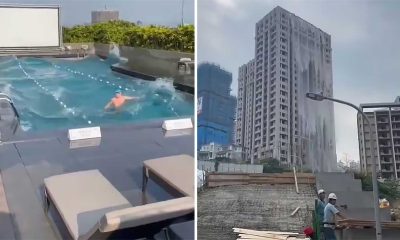
 Pool News5 days ago
Pool News5 days agoEarthquake in Taiwan Causes Waterfall From Rooftop Pool
-

 Equipment Supplies3 weeks ago
Equipment Supplies3 weeks agoFWP Faces Class Action Lawsuit Stemming From 2023 Cyberattack





